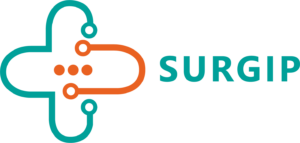Surgical procedures are intricate dances of precision, coordination, and care. Imagine a seamless operation where every member of the surgical team is in sync, resources are optimally utilized, and patient care is at the forefront. This vision is not just a dream but a tangible reality with the advancements in surgical workflow optimization tools. In this blog post, we delve into the transformative impact of these tools on operating room efficiency and patient outcomes. Let's explore how implementing cutting-edge technology can revolutionize the way surgeries are conducted and enhance the overall healthcare experience.
Understanding the Challenges in Surgical Workflow
Factors Affecting OR EfficiencyIn the high-pressure environment of operating rooms, efficient workflow is critical. The challenges that can impact OR efficiency include:
-
Poor scheduling leading to delays and bottlenecks.
-
Inefficient resource utilization causing equipment or staff shortages.
-
Communication gaps leading to misunderstandings or errors.
-
Inadequate coordination between surgical teams and support staff.
Importance of Streamlining Surgical ProcessesStreamlining surgical workflows not only enhances operational efficiency but also directly impacts patient care. By optimizing processes, surgical teams can:
-
Reduce wait times for patients and staff.
-
Minimize the risk of surgical errors.
-
Improve overall patient outcomes and satisfaction levels.
-
Achieve cost savings through optimized resource allocation.
Impact of Inefficient Workflow on Patient CareWhen surgical workflows are inefficient, the consequences can be severe:
-
Increased patient anxiety and dissatisfaction.
-
Higher likelihood of medical errors or complications.
-
Longer recovery times due to delays or miscommunications.
-
Reduced quality of care and patient outcomes.
It is evident that addressing these challenges through the implementation of surgical workflow optimization tools is crucial to improving OR efficiency and ultimately enhancing patient care.
Key Features of Surgical Workflow Optimization Tools
Real-time Scheduling CapabilitiesOne of the primary features of surgical workflow optimization tools is their ability to provide real-time scheduling updates. This allows surgical teams to make quick adjustments based on changing priorities and availability, leading to:
-
Reduced waiting times between procedures.
-
Better coordination of staff and resources.
-
Minimized disruptions and delays in the OR schedule.
Resource Allocation and ManagementEfficient allocation of resources is crucial for optimizing surgical workflows. With these tools, hospitals and surgical centers can effectively manage:
-
Operating room equipment and supplies.
-
Staff scheduling and assignments.
-
Patient flow throughout the surgical process.
Integration with Electronic Health Records (EHR)Integration with EHR systems is a key feature of modern surgical workflow optimization tools. This seamless connectivity offers benefits such as:
-
Access to patient records and medical history.
-
Streamlined documentation and reporting processes.
-
Improved continuity of care and communication between healthcare providers.
Communication and Collaboration FunctionalitiesEffective communication is vital in the fast-paced environment of an operating room. These tools provide features that enhance:
-
Secure messaging and real-time updates between team members.
-
Task assignment and progress tracking.
-
Centralized platform for sharing important updates and information.
By leveraging these key features, surgical teams can enhance their efficiency, streamline workflows, and ultimately improve patient care outcomes.
Benefits of Implementing Surgical Workflow Optimization Tools
Increased OR Utilization RatesBy implementing surgical workflow optimization tools, hospitals and surgical centers can maximize their operating room utilization rates. This leads to:
-
More efficient use of available OR time.
-
Reduced wait times for scheduled procedures.
-
Increased capacity for accommodating additional surgeries.
Improved Staff Productivity and SatisfactionOptimized surgical workflows lead to enhanced staff productivity and satisfaction. Benefits include:
-
Reduced stress and fatigue among surgical teams.
-
Streamlined processes for quicker turnaround times between procedures.
-
Improved work-life balance for healthcare professionals.
Enhanced Patient Outcomes and SatisfactionA key advantage of using surgical workflow optimization tools is the positive impact on patient outcomes and satisfaction levels. This can result in:
-
Fewer surgical errors and complications.
-
Shorter recovery times for patients.
-
Higher overall patient satisfaction ratings.
Cost Savings and Revenue OptimizationEfficient surgical workflows not only benefit patient care but also contribute to financial savings for healthcare facilities. Implementing these tools can lead to:
-
Lower operational costs through resource optimization.
-
Reduced overtime and staffing expenses.
-
Increased revenue through higher patient throughput and enhanced quality of care.
By realizing these significant benefits, organizations can transform their surgical operations and drive positive outcomes for both their staff and patients.
Best Practices for Implementing Surgical Workflow Optimization Tools
Conducting a Thorough Needs AssessmentBefore implementing surgical workflow optimization tools, it's essential to conduct a comprehensive needs assessment. This involves:
-
Identifying pain points in current workflows.
-
Understanding the specific requirements of the surgical team.
-
Evaluating existing processes to pinpoint areas for improvement.
Staff Training and Change ManagementSuccessful implementation of these tools requires proper training and change management strategies. Best practices include:
-
Providing training sessions for all users.
-
Designating internal champions to support adoption.
-
Communicating the benefits of the new tools to staff members.
Setting Performance Metrics for Tracking SuccessMeasuring the impact of surgical workflow optimization tools is crucial for tracking success. Key performance metrics to consider include:
-
OR utilization rates before and after implementation.
-
Staff efficiency and productivity improvements.
-
Patient satisfaction levels and outcomes.
Regular Evaluation and Optimization of WorkflowsContinuous evaluation and optimization of surgical workflows are essential for long-term success. This involves:
-
Soliciting feedback from staff and stakeholders.
-
Identifying areas for further improvement.
-
Adjusting workflows based on data and feedback.
By following these best practices, healthcare facilities can ensure a smooth and successful implementation of surgical workflow optimization tools, leading to enhanced operational efficiency and improved patient care outcomes.
Future Trends in Surgical Workflow Optimization
Artificial Intelligence in Scheduling and Resource ManagementThe future of surgical workflow optimization lies in the integration of artificial intelligence (AI) technologies. AI-powered tools can revolutionize scheduling and resource management by:
-
Analyzing data to predict OR demand and optimize schedules.
-
Automating repetitive tasks for increased efficiency.
-
Enhancing decision-making processes based on real-time insights.
Remote Monitoring and Telemedicine IntegrationThe advancement of remote monitoring and telemedicine technologies is set to transform surgical workflows. Benefits include:
-
Allowing for virtual consultations and pre-operative assessments.
-
Facilitating remote monitoring of patients post-surgery.
-
Improving accessibility to healthcare services for patients in remote locations.
Predictive Analytics for Proactive Decision-makingThe use of predictive analytics in surgical workflow optimization tools enables proactive decision-making based on data-driven insights. This includes:
-
Identifying potential bottlenecks or issues before they occur.
-
Optimizing resource allocation based on predicted demand.
-
Improving overall operational efficiency and patient outcomes.
Customization and Scalability of Software SolutionsFuture trends in surgical workflow optimization tools involve greater customization and scalability options. This includes:
-
Tailoring software solutions to meet the unique needs of different healthcare facilities.
-
Providing flexibility to scale operations as needed – whether in a small clinic or a large hospital setting.
-
Ensuring seamless integration with existing systems and technologies for a cohesive workflow ecosystem.
By embracing these future trends, healthcare providers can stay at the forefront of innovation in surgical workflow optimization, ensuring efficient, effective, and patient-centric care delivery.
Case Studies: Successful Implementation of Surgical Workflow Optimization Tools
Hospital A: Increased OR Efficiency by X%
-
Hospital A implemented surgical workflow optimization tools to streamline their operating room processes.
-
By utilizing real-time scheduling capabilities and resource management features, they improved their OR efficiency by X%.
-
Staff reported reduced wait times, better coordination, and overall higher satisfaction levels.
Clinic B: Reduced Turnaround Time for Surgeries by Y Minutes
-
Clinic B integrated surgical workflow optimization tools to focus on reducing turnaround times between surgeries.
-
Through efficient resource allocation and improved communication functionalities, they successfully decreased turnaround time by Y minutes.
-
Surgeons and support staff noted increased productivity and smoother workflow transitions.
Surgical Center C: Achieved Z% Increase in Patient Satisfaction
-
Surgical Center C prioritized enhancing patient outcomes and satisfaction using workflow optimization tools.
-
With integrated EHR systems and enhanced collaboration features, they achieved a Z% increase in patient satisfaction rates.
-
Patients acknowledged the improved care quality and personalized attention received during their surgical experiences.
These case studies highlight the tangible benefits and positive results that can be achieved through the strategic implementation of surgical workflow optimization tools in healthcare settings.
FAQ
How do surgical workflow optimization tools improve operating room efficiency?Surgical workflow optimization tools enhance operating room efficiency by streamlining scheduling, resource allocation, and communication among surgical teams. These tools help reduce wait times, minimize errors, and maximize the utilization of OR resources.
Are surgical workflow optimization tools suitable for all types of healthcare facilities?Yes, surgical workflow optimization tools can be customized to suit the needs of various healthcare facilities, including hospitals, clinics, and surgical centers. The flexibility and scalability of these tools make them adaptable to different settings.
What are the key benefits of implementing surgical workflow optimization tools?Implementing surgical workflow optimization tools can lead to increased OR utilization rates, improved staff productivity and satisfaction, enhanced patient outcomes, and cost savings through optimized workflows and resource management.
How complex is the implementation process of surgical workflow optimization tools?While the implementation process may vary depending on the specific tools chosen, most providers offer comprehensive training and support to facilitate a smooth transition. It requires initial assessment, staff training, and ongoing evaluation for successful integration.
Can surgical workflow optimization tools integrate with existing electronic health record systems?Yes, many surgical workflow optimization tools are designed to seamlessly integrate with existing electronic health record (EHR) systems. This integration enhances access to patient information, streamlines documentation processes, and improves overall communication within the healthcare network.

